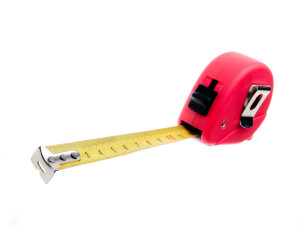What’s the secret of measuring training outcomes? How do you do it?
I read a comment yesterday in response to an article about the importance of measuring the impact that training has on the business. The comment was about why the article didn’t share the metrics that should be used when measuring training outcomes.
This is apparent in my conversations with business leaders as well as Learning & Development professionals. I often hear how “it can’t be measured” or “we don’t have a metric for that”
This got me thinking how there isn’t really a secret to how to measure training outcomes as it depends on the type of skills being developed and the changes of behaviour that’s expected.
There isn’t a one size fits all approach.
The time to plan how to measure the training is when the skills, knowledge and attributes that are to be developed have been identified.
If the purpose of the training is to change behaviour on job then we need to measure whether those behaviours did change as a result of the training and also measure the business results that the behaviour has impacted.
Here are some examples based on delivering Sales training and Leadership training. They’re both different sets of skills which need to be measured differently
Sales Training
Surely sales training is the easy measure. Better sales conversations = improvement in number of sales right?
Most businesses track their sales numbers but is it the best measure to determine success of training?
You need to identify what your indicators will be for success before designing the training program.
As I always say:
“The after picture doesn’t make sense unless you have a before picture”
Ask yourself this question. If the training is effective, then what would be different? How would the behaviours of the participants change? If these behaviours change how would it impact on the business results? In what way could it be measured and is it currently being measured?
Depending on what business outcomes are necessary you could measure:
- Identified more prospects or improved the quality of the prospects
- More clients or less clients
- More clients visits or less
- Increased the number of items clients bought or increased the range of products
- Contacted the clients more or less often in between purchases
- Increased the market share generally or from particular competitors
- Overcame specific obstacles
- Worked more independently or communicated better as a team
- Built longer term relationships
- Provided better customer experiences
- Increased customer loyalty and advocacy
- More confidence in approaching customers etc
Leadership Training
What behaviours are you wanting to change as a result of leadership and/or management training?
In such a broad area measuring the training outcomes will once again depend on what these specific behaviours are.
You could measure:
- Improved the skills and behaviours of the team members
- Amount of team meetings
- Quality & quantity of individual contributions
- Improved team outcomes
- More confidence
- Effective performance management conversations
- Team members felt more supported and encouraged
- Developed more effective plans
- Implemented more improvements
- Encouraged innovation
- Happier team
How to measure
So many questions but necessary when determining what will be the best way measure your training outcomes.
What you measure needs to be impacted directly by the change in behaviour
You need to consider both Quantitative and Qualitative measures.
Quantitative
Your current Key Performance Indicators may be sufficient, if not start measuring it.
For example, you may be tracking sales but not how many customers you’re having conversations with and how many of those convert to a sale.
You may be tracking team productivity but not how much discretionary effort each individual is putting in.
If you’re not currently measuring it then have the participants take their own. They can individually track the different techniques and strategies they use as well as the results they are impacting.
Qualitative
These measures are mostly based on people’s opinion. It’s usually collected in a survey format which is easy to do via Survey Monkey
Customer or supplier feedback
Individual level of confidence & competence
How supported people feel
The individual actions taken
Feedback from team leaders and other team members
How much happier they feel – Investigate tools that help measure such as the Happiness at work Survey
These are some examples of Quantitative and Qualitative business results that were achieved following a recent training program we delivered.
Increased number of interventions from 22 – 150 per quarter
This business was extremely pleased as they receive income based on the number of interventions.
In addition:
100% of the participants stated that the training had improved their level of job satisfaction
Most importantly, the effort put into designing a customised evaluation of training plan first, will help you to design a tailored training program which focuses on developing those skills needed to improve these behaviours. Therefore ensuring that the training outcomes are more likely to be realised.
Verifying the success of your training plan is crucial to demonstrate that the business received a good return on its investment. It could also inspire the business to use training to develop skills in other areas.
Of course as a trainer it is also extremely rewarding and can improve your own job satisfaction.
If you need help designing your training or evaluation plan please contact us





Leave A Comment